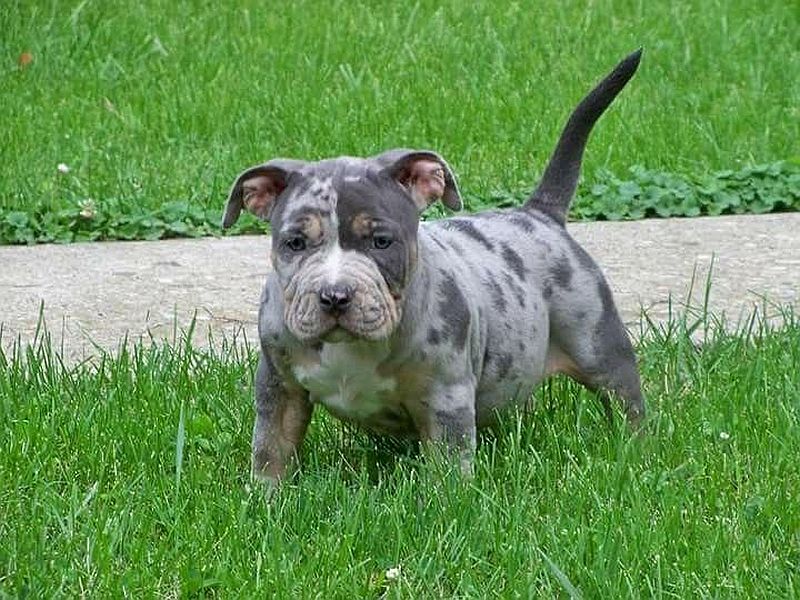What is a ghost merle bully?
Dogs with cryptic merle (also called phantom or ghost merle) typically display little to no merle pattern and some may be misclassified as non-merles. The cryptic merle alleles occur in the lower end of the range (typically from 200-255, however, this range and designation varies by study).
A phantom merle or cryptic merle is one with such small patches of merle—or none at all—that it appears to be a non-merle. This is commonly seen in dogs who are recessive red, clear recessive reds in particular, though patches can still be seen in certain red dogs.
Is Merle a Natural Coat Color for Pit Bulls?

Now, we think all doggos are handsome and deserve belly rubs, but with the rise in merle pit bulls, many people are wondering what the official word is about them from show ring circles and if they can be entered in the breed registry.
With merle pit bulls, this is a gray area. Why? Because some people confuse the American pit bull terrier with other bully breeds.
Per the UKC breed standard for the American pit bull terrier, merle is prohibited along with albinism. Other than that, all colors, coat patterns, and color combinations are allowed. The similar American bully is also forbidden in the merle pattern, per the UKC breed standard.
Now, the American pit bull terrier isn’t recognized by the AKC, but their cousin, the American Staffordshire terrier, is. Unhelpfully, “pitbull terrier” is listed as another name for these in the breed overview.
The American Staffordshire terrier is permitted in all colors and patterns, per the AKC standard, including parti or patched. Dogs that are more than 80 percent white, black and tan, or liver are seen as less than ideal in the official standard.
Long story short: Officially, merle is a banned color in American pit bull terriers and isn’t naturally occurring, but similar bully breeds may have the pattern and still be registered.
Does Merle Color Cause Health Problems?
Dogs who have only a single copy of the merle gene rarely suffer from deafness and blindness, but the double merles (those with two copies of the gene) are at a greater risk of deafness, total blindness, and other eye issues due to a lack of skin pigment.
This lack of skin pigment can also put them at a high risk of skin cancer or sun burns.
If your merle puppy’s parents weren’t genetically tested before breeding, it’s cause for concern. Not because we think deaf or blind dogs aren’t awesome, but because eye and skin issues can be painful for your pooch and expensive for you to treat in the long run.
The Secret TRUTH About The MERLE Color In American Bullies & Pitbulls | New Born Merle Puppies
A merle coat is one of the most gorgeous in the dog world, an enticing swirl of colors which grants each dog a unique and distinguishing pattern, which often involve dark splotches of a color overlaying a lighter shade of the same hue.
While merle coloring is not restricted to pitbulls, the allure of this coat is attractive to the lovers of this breed and many current and would-be pitbull owners covet these astonishingly beautiful animals and many are willing to pay great expense to have a merle pitbull of their own.
As such, there are a wide-spectrum of questions about merle pitbull acquisition and even concerns raised about what causes these unusual color schemes.